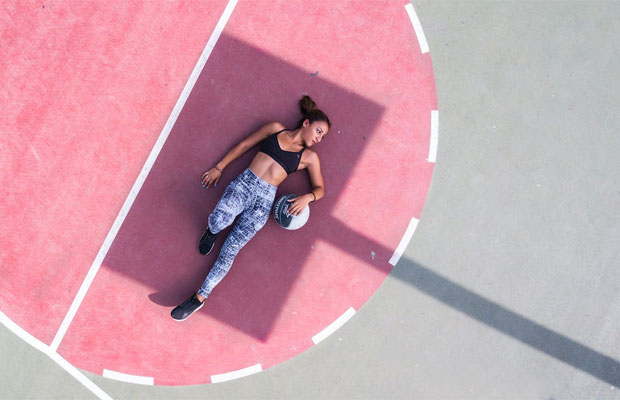A Guide to Basketball Court Markings

A Guide to Basketball Court Markings
When watching basketball, one of the most familiar sights is the distinctive court surface and the unique basketball court markings and lines. These basketball court floorings have to be strong, durable, and clean-looking. These elements are retained even as the ball bounces and players rush about. But what materials are used for basketball courts and markings, and is there a best basketball court markings material?
What are the most common indoor basketball court materials?
Since the beginning of the sport of basketball, most basketball courts, including indoor basketball courts, have been made of wood. Wood flooring is the most common type of basketball flooring. The basketball court flooring is made from a variety of timbers. For example, hardwood or hard maple courts. However, an increasing number of innovative materials are leading the way.
Many basketball court surfaces do not have the same playing surface. It all relies on the precise court required the cost-effectiveness of the court, and the types of basketball objectives. Vinyl is one of the most popular flooring materials nowadays. Because of the quality, pricing, and performance, many people prefer to install this one.

What are the most common materials for an outdoor basketball court?
The waterproofing process used to create wood floorings, such as maple materials and hardwood solutions, eliminates many of its beneficial characteristics. It is for this reason that they are not suitable for outdoor basketball courts.
As a result, many people relied on readily accessible and water-resistant materials. Outdoor basketball courts, for example, are made of concrete, asphalt, and plastic. When making a decision, consider factors such as fewer skin abrasions and low upkeep. And whether or not they can resist adverse weather conditions. However, the finest materials will be determined by your budget, location, and who will be playing.
Materials for basketball court markings
The usage of thermoplastic sports court markings against traditional painted line markings on basketball courts is being debated. Both line marking standards offer distinct qualities and benefits in terms of performance and durability, but it is critical to select the appropriate type of marking for your project.
Although both thermoplastic and painted line markings have advantages for different purposes, facilities that want the optimum performance for sports should choose to have the lines painted with acrylic anti-slip paint. The thermoplastic markers are a more lasting choice, but they might distort the trajectory of the ball, making them suitable for recreational facilities that are not necessary utilized competitively.

Conclusion
For both indoor and outdoor basketball courts, there are many different materials used in constructing and painting markings on the surfaces of these areas. The specific materials used will depend on a wide range of factors, such as budget, priorities, location, and required durability, and there is no single best option for basketball court markings or surfacing.
If you are looking to construct a new basketball court, choosing which materials to use is something that requires careful consideration. Are you planning on an indoor or outdoor pitch? Are you expecting it to get particularly heavy wear and tear? Does precision and perfect smoothness matter much to you? All of these questions are important to bear in mind as you plan your choices.
Guest Article.




